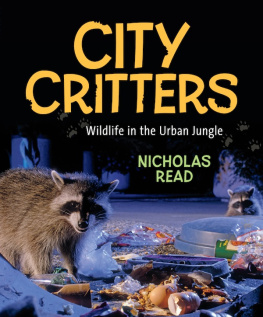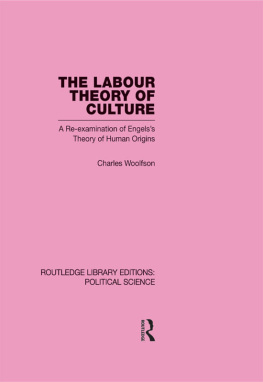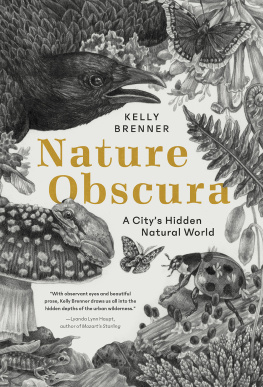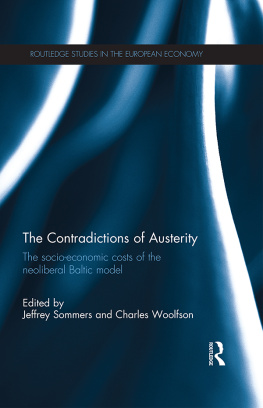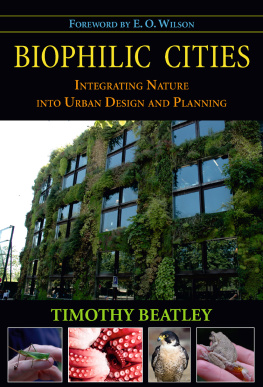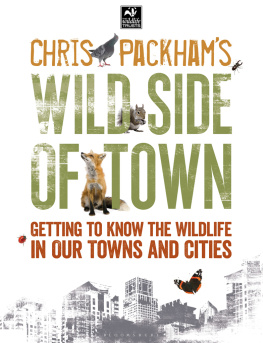FIELD NOTES FROM
A HIDDEN CITY
Also by Esther Woolfson
Corvus: A Life with Birds


Copyright 2014 by Esther Woolfson
All rights reserved under International and Pan-American Copyright Conventions. No part of this book may be used or reproduced in any manner whatsoever without written permission from the publisher, except in the case of brief quotations embodied in critical articles and reviews.
First published in Great Britain by Granta Books, 2013
Illustrations copyright Mnica Naranjo Uribe, 2013
The text credits on pp. 349350 constitute an extension of this copyright page
Library of Congress Cataloging-in-Publication Data is available
ISBN 978-1-61902-349-9
COUNTERPOINT
1919 Fifth Street
Berkeley, California 94710
www.counterpointpress.com
Distributed by Publishers Group West
10 9 8 7 6 5 4 3 2 1
In memory of my father, and of a great musician, my cousin Eric Woolfson (19452009)
... we would assume that what it is we meant
would have been listed in some book set down
beyond the skys far reaches, if at all
there was some purpose here. But now I think
the purpose lives in us all and that we fall
into an error if we do not keep
our own true notebook of the way we came,
how the sleet stung, or how a wandering bird
cried at the window...
Loren Eiseley
Contents

It was almost four in the afternoon on one of the oddly quiet days of December. Snow had fallen again, yet another layer to freeze onto the iron-hard strata of thick, packed ice. In less than a month, the city had been turned into a fortress of ice and stone. It was already dark as I walked past the church at the end of the lane. A line of bright lights from house windows seemed to catch at the sparkle in the air. Every afternoon towards dusk, the cold became visible; it fell in a fine mist of ice particles which stung in the throat. By the time it was dark, it had glazed every surface to an even glitter.
Christmas soon, and a year ending. The year had been one of superlatives the lowest recorded temperatures, the heaviest snow, the wettest summer; in matters economic as well as meteorological, of no less magnitude and equally unassailable. It seemed a year designed to test every certainty, to bring the stirrings of disquiet, to make you wonder what might be next and when.
Illuminated by a streetlight, something in the lane moved in the snow, a frantic patch of thrashing darkness, a flail and panic of blue and grey. Whatever it was, I ran clumsily towards it, impeded by paddings of clothes, socks and boots. It was a bird, almost submerged, drowning in snow. I scooped it up from the drift in both hands; a young pigeon, still small with the pink, moist-looking beak of a recent fledgling. He was feathered but his feathers were drenched and he carried one wing awkwardly. There were no other birds around. It was past roosting time, too late and too cold for them. I folded the wing carefully against the birds body and held him. Id been about to go to the corner shop but suspected he wouldnt be welcome there. There was nothing I could do but carry him home, beyond immediate danger. It was only as Ive done with generations of the avian needy before him.
As we walked, the bird peered from between my hands, a feral pigeon, a blue rock pigeon, Columba livia: future street-dweller, serial pavement-picker, underfoot obstacle, as familiar and ubiquitous as ourselves, one of the latest generation of the birds who resolutely populate the cities of the world, a parallel presence to our own, knowing, able, urban survivors, accepted and decried in varying measures. I could feel his fast, panicky heartbeat, even through thick gloves.
At home, I wrapped the bird in a towel to dry him, carrying him swaddled under my arm as I lined a box with newspaper. When he was dry, I put him in and he settled immediately. I put the box in the vestibule, where it was just warm enough the bird had his full plumage, and now that he was dry, hed be able to keep himself warm. Later, Id think about all the possible problems of raising him but first I had to go and finish my shopping.
Walking back down the lane, past garden walls tessellated by blown snow, I realised that the birds parents must have been roosting among the stone buttresses of the church near to where I found him. Pigeons breed at unlikely times although that moment seemed even less judicious than most. I wondered how hed come to be there fallen, pushed, lost. With birds, you never really know.
On my way back home again, I stopped a moment. The place where hed been struggling was now a patch of compacted snow, ridged and imprinted with the broad zigzag indentations that must have been made by the tyres of the Range Rover that had driven slowly past us in the lane as we walked home together.
Over the next few days, the bird stayed contentedly enough in his box. I would wait until the wing was fully healed and then let him go, return him to the wild.
As I fed and took care of the bird, I began to think more about the expression return to the wild, the words we use to describe setting a creature free to return to its own environment, to live its life among its own, a natural life. The wild in this case would most probably be the large sandstone church at the end of the lane, a neo-Gothic building of step-corbelling and intricate stone finials, around whose tall central spire crows and magpies engage in glorious aerial combat on windy days. It would be the roofs and gardens of this district, the handsome Victorian villas, long-established trees and wide, quiet streets only a short walk from the centre of the city. Hardly wild.
For all that, this was a wild bird a wild, city bird although the words wild and city seemed difficult to reconcile. I began to think about wildness in relation to creatures who live in cities, about whether or not we consider them less wild than creatures living elsewhere, or think of them as somehow a lesser part of nature itself. I wondered if the same might apply to humans, as if merely by being in a city, not only might our lungs be polluted but ourselves, our minds (and if we have them, souls), as if urban dwellers must by definition be over-avid consumers of the unnecessary, weakened by purchase, alienated in every way, distanced from a lost, admonitory Eden. Are we, I wondered, living lives remote from all that is natural, beneficial, wild, or are we as much a part of the natural ordering of the universe as the wildest of things, moved by the same forces, as wild as anything else on earth? It seemed to me that if Im representative of my species, the bird was representative of many more, of all the other birds, beasts and smaller life forms, seen and unseen, who populate our cities, who make their lives among us and were often there before us adapting to our habits, sharing with us the triumphs or follies of our building policies, our tendencies to destroy and pollute or to engage in the ecologically catastrophic. Their presence may be the only contact many urban people have with the natural world but our relationship with them seems changed by proximity, diminished by the very fact of their being here among us. As Id passed the compacted snow where Id picked up the bird, I had begun to think of the value of any creatures life and of the ways in which we make judgements or calculate worth, of the complex gradations we apply to other species, the ones we use to approve or to condemn.
Next page

